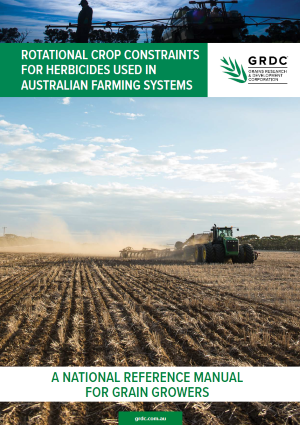Rotational crop constraints for herbicides used in Australian farming systems
Published: 4 Jul 2019
Many herbicides used in agriculture can persist in the soil for extended periods of time. Herbicides designed to be used for residual weed control need to provide weeks or months of persistence in the soil to achieve their desired weed control objectives. Additionally, some herbicides that typically are used for post-emergent weed control and which are not typically considered ‘residual’ herbicides may also persist in the soil for some time after application.
It is important to understand the soil persistence of a herbicide and its potential impact on following crops in the rotation prior to the herbicides’ use.
This guide has been developed to provide grain growers and advisers with relevant information to assist in planning the use of herbicides into crop sequences and in managing rotation constraints.
This guide is in two parts.
Part 1 - covers the principles of herbicide persistence in the soil and factors that influence herbicide breakdown. Understanding these factors may help to predict variability from year to year under different environmental conditions, to assist decision making in situations where labelled plant-back requirements have only just been met, or where statements on the herbicide label do not adequately cover the paddock situation.
Part 2 - is a summary of label statements relating to directions for managing rotational crops.
Download PDF
Region: National
Was this page helpful?
YOUR FEEDBACK

